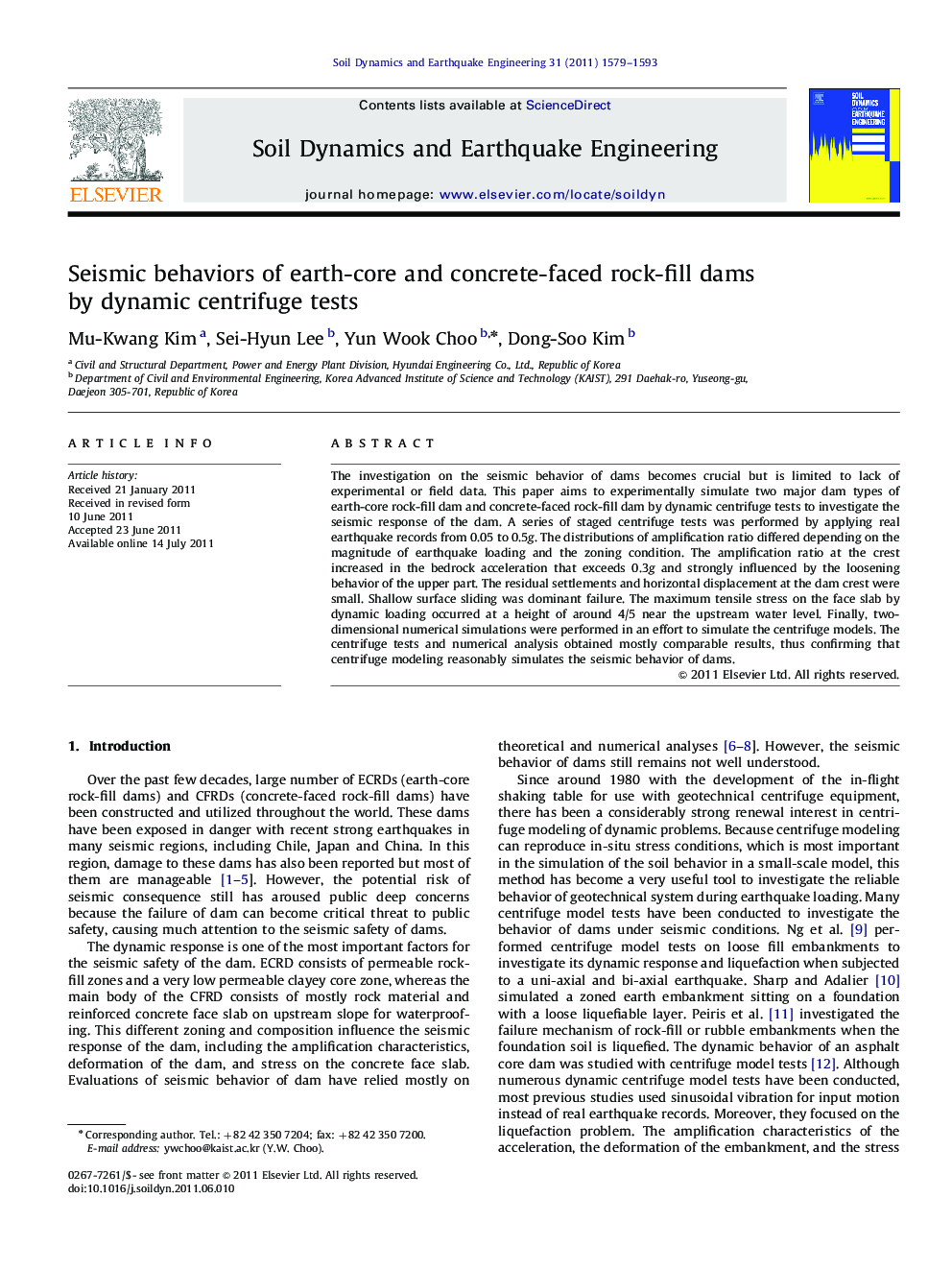| Article ID | Journal | Published Year | Pages | File Type |
|---|---|---|---|---|
| 304527 | Soil Dynamics and Earthquake Engineering | 2011 | 15 Pages |
The investigation on the seismic behavior of dams becomes crucial but is limited to lack of experimental or field data. This paper aims to experimentally simulate two major dam types of earth-core rock-fill dam and concrete-faced rock-fill dam by dynamic centrifuge tests to investigate the seismic response of the dam. A series of staged centrifuge tests was performed by applying real earthquake records from 0.05 to 0.5g. The distributions of amplification ratio differed depending on the magnitude of earthquake loading and the zoning condition. The amplification ratio at the crest increased in the bedrock acceleration that exceeds 0.3g and strongly influenced by the loosening behavior of the upper part. The residual settlements and horizontal displacement at the dam crest were small. Shallow surface sliding was dominant failure. The maximum tensile stress on the face slab by dynamic loading occurred at a height of around 4/5 near the upstream water level. Finally, two-dimensional numerical simulations were performed in an effort to simulate the centrifuge models. The centrifuge tests and numerical analysis obtained mostly comparable results, thus confirming that centrifuge modeling reasonably simulates the seismic behavior of dams.
► We simulate centrifuge simulations of earth-core and concrete-faced rock-fill dams. ► The compacted dam body was loosened by strong bedrock acceleration of over 0.3g. ► The loosening caused significant acceleration at crest and deformation on face slab. ► The most severe damage was shallow surface sliding and uplift at crest.
